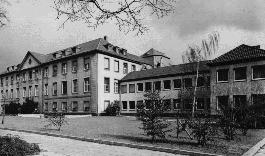
Theory Department
Non-Renormalization Theorems in Supersymmetry
Elisabeth Kraus and
Rainald Flume
In the first articles on supersymmetric field theories Wess and Zumino
found that supersymmetric field theories have a better divergence
structure than usual field theories. While the vanishing quadratic
divergences could be immediately understood as a consequence of
supersymmetry, the vanishing of radiative corrections to the
superpotential was mysterious.
Later, using the superspace formalism, the non-renormalization of the
superpotential could be shown in general: the proof is based on explicit
evaluation of supergraphs at zero momentum.
Thus it was impossible to show these so-called non-renormalization
theorems in the component formulation of supersymmetry or even in the
Wess-Zumino gauge of gauge theories.
For the simplest supersymmetric field theory, the Wess-Zumino model, we
have show that the non-renormalization theorems for the superpotential
can be deduced from the cohomology structure of the supersymmetry
transformations.
Each invariant can be written as second supervariation of a lower
dimensional field monomial and using this property
one can directly establish a
connection between the vertex functions and the manifestly covariant
Green's functions.
Now, we proceed in investigating the various non-renormalization
theorems in supersymmetry. We can now use the structurally simpler
Wess-Zumino gauge and are no longer relied on the formulation in
superspace where we have to worry about infrared divergences.
 18. August 2000
18. August 2000
www@th.physik.uni-bonn.de

